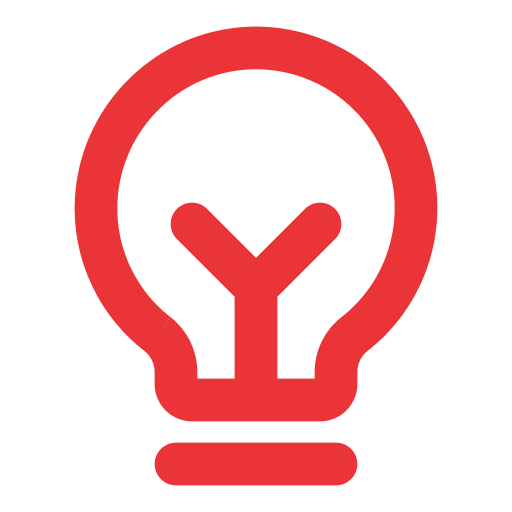STEP-BY-STEP GUIDE
How to Integrate a Sales Configurator Into Your Sales Process
Everything you need to prepare your B2B manufacturing business for a smooth sales configurator rollout
Sales configurator isn’t just a tech upgrade.
It’s a shift in how you sell.
This guide walks you through the steps you need to follow - complete with checklists - so you can integrate a configurator into your sales process and start generating accurate quotes from day one.
Audit Your Current Sales Process
You can’t streamline what you haven’t mapped. Before adding new tools, you need to understand your current quote-to-order process. Where it works, where it breaks, and where the sales configurator can reduce friction.
1
Follow a real deal from lead to delivery
Map every step in the process, from first call to quote to final production handoff. It reveals delays that aren't obvious on paper.
Interview your sales team and pre-sales engineers
Ask “Where do you lose time?” “What parts of the process do you bring most value on?” “What causes rework?” You’ll find knowledge that’s not documented but critical.
Document all tools used across the workflow
List every spreadsheet, PDF, internal app, and email template involved. It shows where reps are compensating for tool gaps.
Identify points of manual validation
Any time someone needs to “double-check with production,” you’ve found a bottleneck the configurator can eliminate.
Capture quoting inconsistency across reps
Look at how different reps quote products. Are they explaining options in conflicting ways? Inconsistent quoting is a sign that your process depends too much on individual knowledge.
Did You Know?
Sales reps spend just 28% of their time actually selling. The rest goes to admin, quoting, and internal coordination.
→ Mapping your process shows exactly where time gets wasted and where a sales configurator can save hours.
Structure Your Product Logic for Configuration
You already have product rules. But they may live in PDFs, pricing sheets, or just inside your sales engineers’ heads. To make them usable in a sales configurator, that knowledge needs to be structured clearly, consistently, and in a format that software can enforce.
2
List all configurable elements
Break down what reps should customize on their own: dimensions, finishes, components, layouts, accessories. This sets the foundation for what the configurator must support.
Organize compatibility and constraint rules
Structure rules that define valid combinations (e.g. “X only works with Y,” “Z requires minimum width”). These prevent errors and reduce the need for manual validation.
Map pricing logic to configuration choices
Clarify how selections affect price: by material, dimension, layout, or quantity. A clear model ensures quotes are accurate, every time.
Map each option to production data
Tie every configurable choice to real SKUs, part numbers, or materials. This will give the sales configurator what it needs to generate BOMs and other manufacturing documents.
What’s Often Overlooked
Tribal knowledge - the undocumented rules only senior team members know - is one of the biggest risks in scaling a B2B sales process.
→ A sales configurator helps document and apply that knowledge consistently, so new reps can quote like veterans.
Pick the Right Feature Set For Your Product Complexity
A sales configurator should match the reality of your product and workflow. Off-the-shelf tools won’t work if you sell modular, made-to-measure, or complex products. Think in terms of what your sales team needs to sell without delays.
3
Do you need modular configuration logic?
If your product is built from interchangeable parts (e.g. cabinetry, railings, display systems), you need logic that handles how parts connect, what fits with what, and which setups are valid.
Do you need parametric models?
If reps need to enter precise dimensions (to the millimeter or quarter inch), parametric logic applies all product constraints automatically. This way custom sizes are always valid.
How complex is your pricing logic?
If prices change based on dimensions and combinations, you’ll need built-in CPQ. If pricing is flat or per-component, you can keep the setup lighter.
What exports need to be generated automatically?
Define the downstream outputs required from each configuration. Like BOMs for production, CAD files for engineering, and SKU mappings for ERP.
Which systems does the sales configurator need to connect to?
For best results, your configurator should talk to your CRM, ERP, and CAD systems. That ensures quotes, customer data, and production files all stay synced.
How We Do It at Salsita
We build configurators in phases. That means you don’t have to define everything on day one.
→ Launch with the must-haves, test it in the real world, and expand from there. This phased approach makes the rollout smoother and ensures your configurator grows with your business.
Drive Sales Team Adoption from Day One
A sales configurator only delivers value when it’s embedded into your sales team’s actual habits. It doesn’t happen automatically. You need to plan for adoption like you plan for deployment. By making the tool trusted and easier than the old way.
4
Involve sales reps early in the process
Get their input during planning and testing. If they help shape the tool, they’ll trust it more and be more happy to use it.
Train with real use cases, not generic demos
Use deals they recognize. Walk through typical configurations and objections so they see the direct benefit to their daily work.
Integrate it into their daily workflow
Get rid of spreadsheets, PDFs, and scattered quoting templates. The configurator should replace those manual tools. Aim to make it the single source of truth for configuring and quoting.
Keep the feedback loop open
Even after launch, keep checking with your sales team. What’s working? What needs improvement? Their insights help you fine-tune the configurator so it keeps fitting their needs.
Did You Know?
Nearly 70% of sales reps say they’re overwhelmed by the number of tools they need to close deals.
→ Too many disconnected systems lead to frustration and slow adoption. Which is why the configurator should replace, not add.
Ready to Build? Choose the Right Partner.
Once your sales process is mapped and your product logic is structured, you're in a strong position. The next step is choosing a partner who can work with what you have. Not one that offers a generic platform, but one that can adapt to your workflow, your complexity, and your priorities.
Look for a partner that can:
• Support advanced configuration logic based on real manufacturing rules
• Integrate with your existing systems without forcing replacements
• Collaborate with your team, not override their process
• Build in phases so you can validate early and expand over time
At Salsita, we develop sales configurators for businesses with complex products, long decision cycles, and multiple stakeholders involved.



